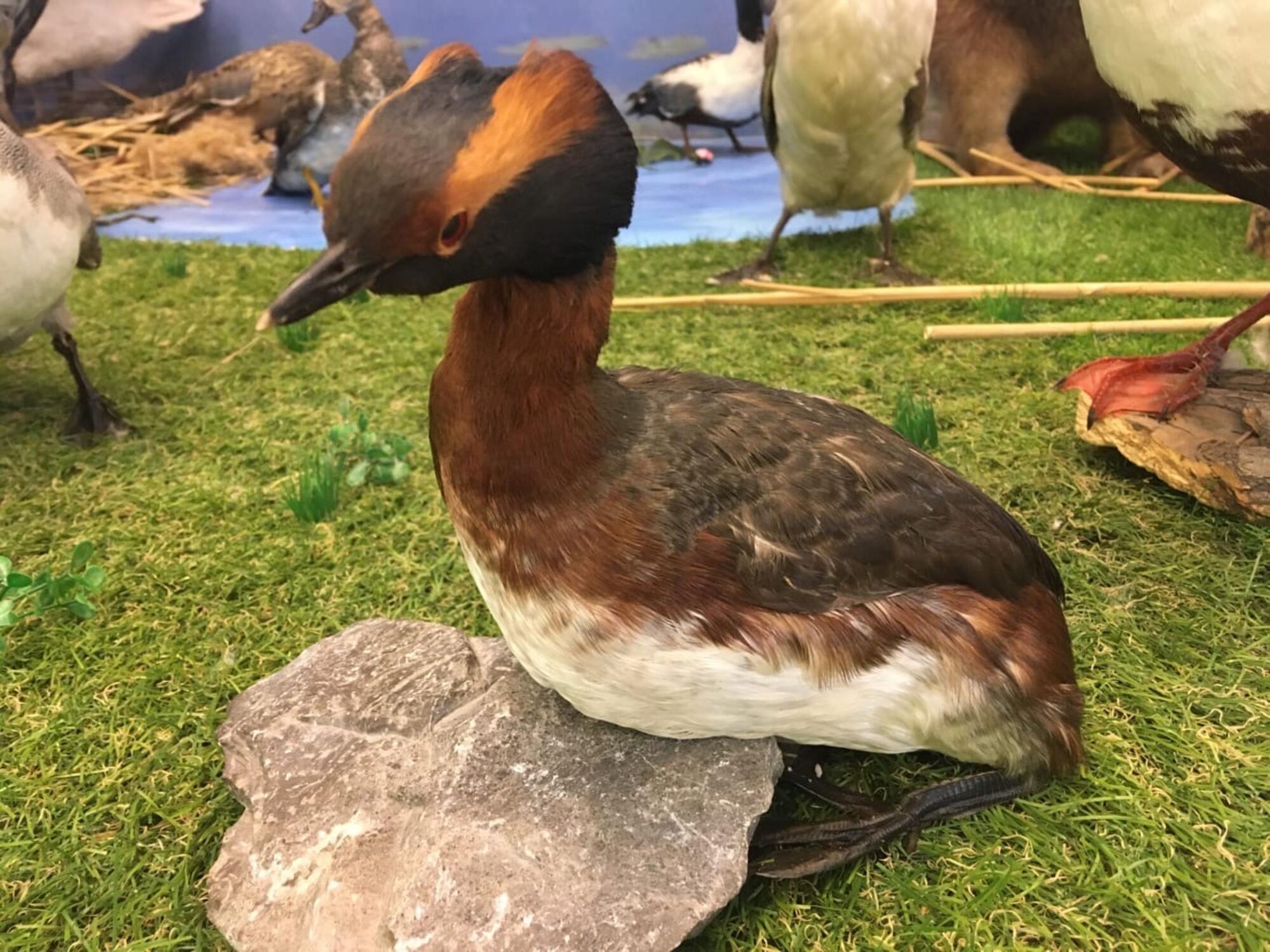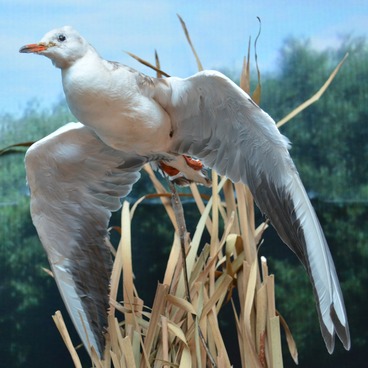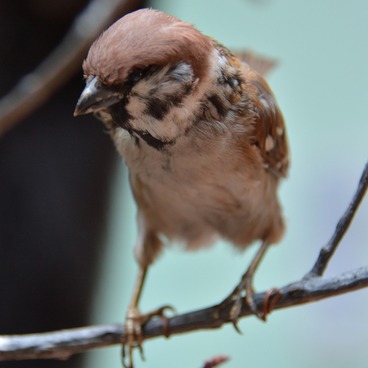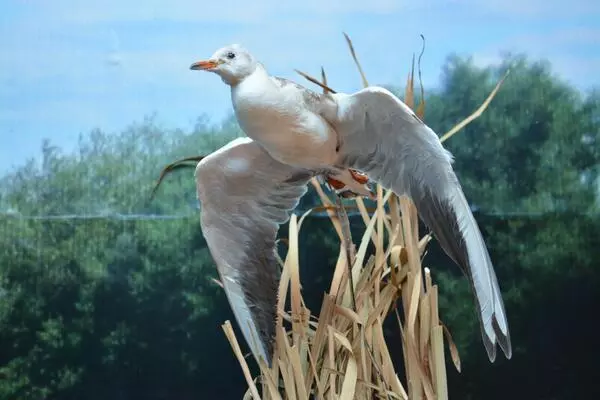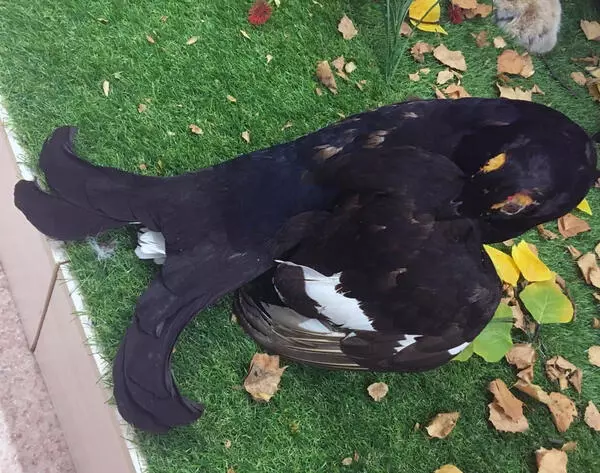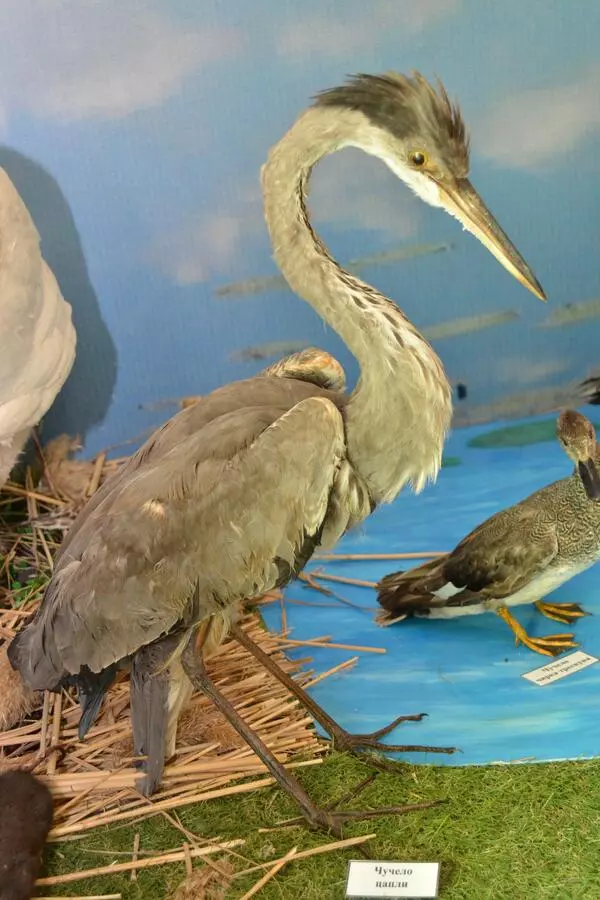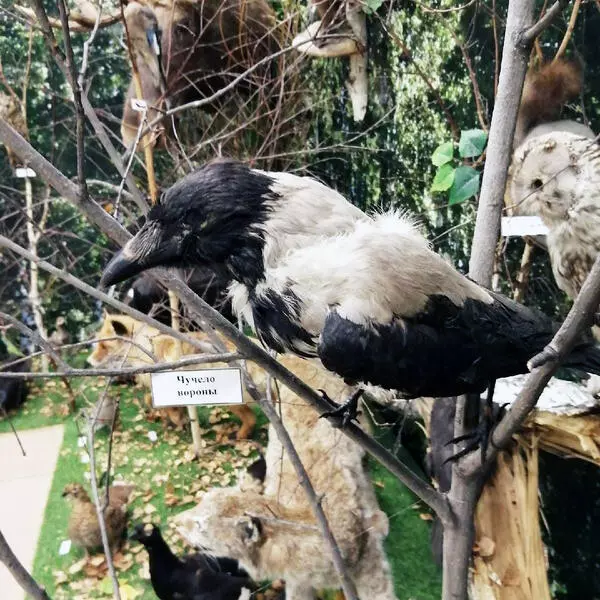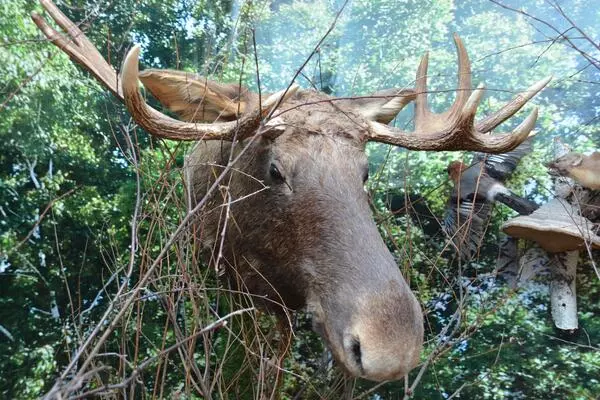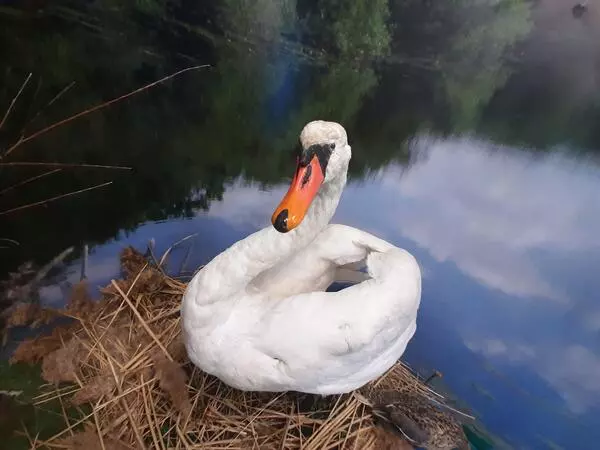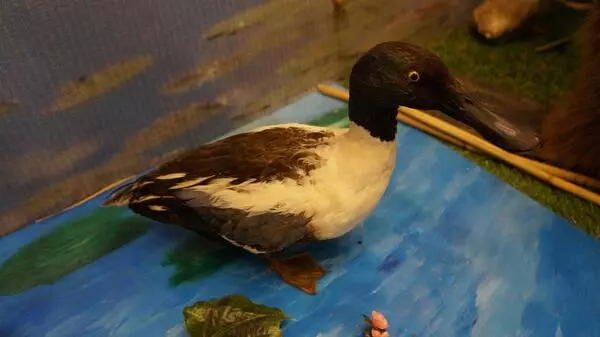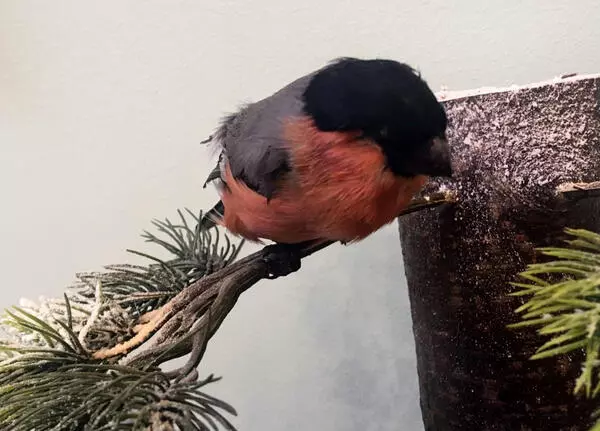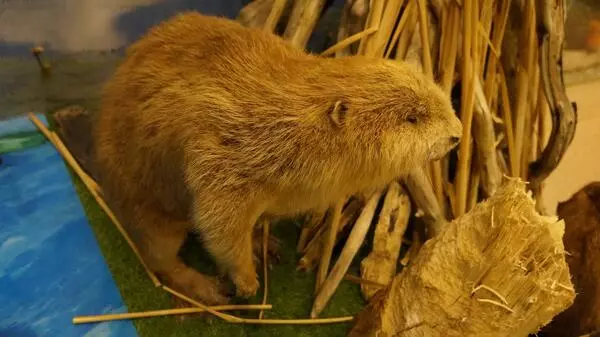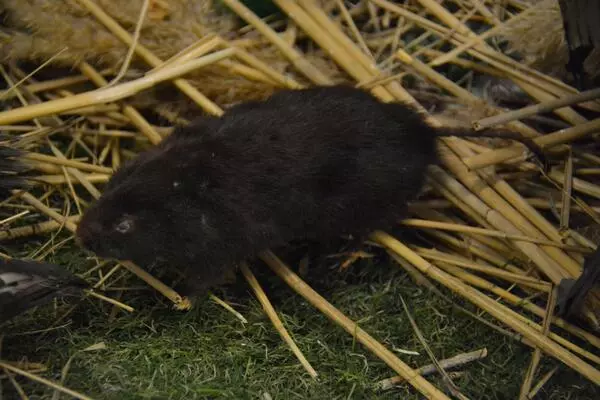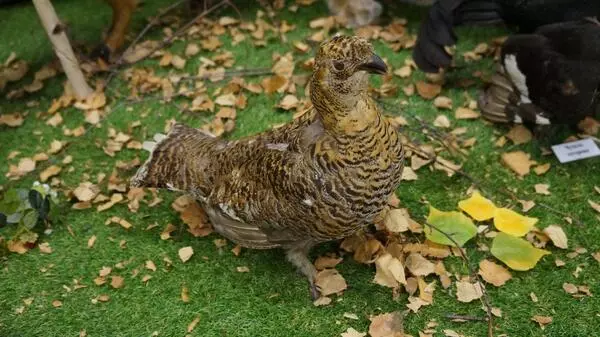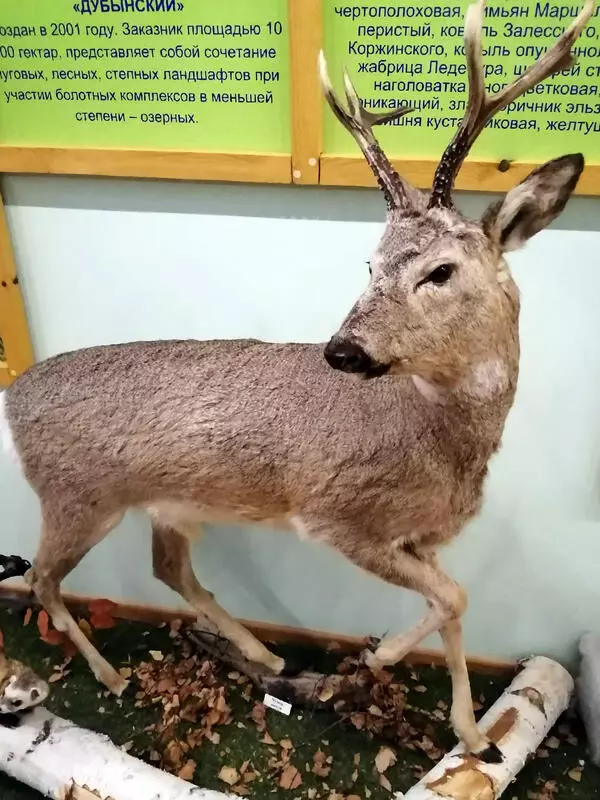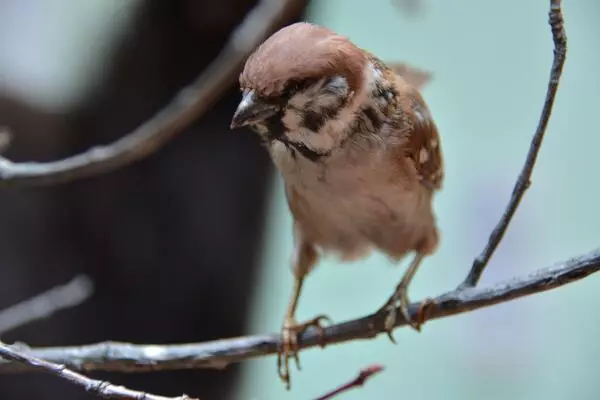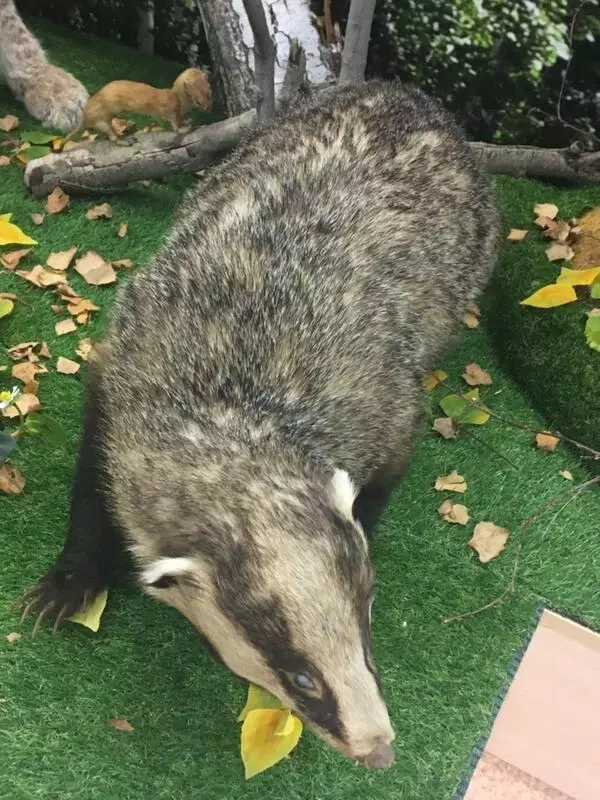The horned, or SlavOnian, grebe /ˈgrēb/ mostly inhabits northern regions of America, Europe, and Asia. In Russia, the horned grebe can be found everywhere from Lake OnEga to SakhalIn—in southern woodlands, grasslands, wooded grasslands, and sometimes up in the Altai mountains. The bird prefers small lakes and oxbow lake in floodplains. The horned grebe is a small-numbered species. The bird is more cautious than other grebes but comes up to the bank more frequently.
In spring and summer, the horned grebe looks exquisite—its front neck and flanks are dark red, its head has a black collar, and a pale red band runs from the bill to the ears. The horned grebe can raise its red ear feathers. When raised, they resemble small horns, hence the name ‘horned’. The bird’s plumage is mostly pale with a dark grey cap on the head and a whitish front neck in cold seasons Its bill is straight and black with a white tip. The horned grebe measures up to 30 to 35 centimeters, while its weight averages 400 grams.
Its voice is a set of rather high-pitched stridulant and miaowштп sounds. The bird is usually silent. However, it frequently repeats its weak, mournful, and dolesome “aaarrh” at nights from spring to fall.
The horned grebe feeds on water invertebrates and small fish in winter. Like most of the grebes, the horned grebe dabbles in midwater. It often dives to considerable depths and spends there an average of 20 seconds, although it can remain underwater for up to 3 minutes. The horned grebe pecks up insects from the water surface and plants or catch them in the water with its head and neck plunged in it. When swimming, the bird throws its head a little back. The horned grebe is a good flyer.
By November, the horned grebe leaves for the Black Sea’s shore in the Caucasus and to the seas of southern and northern regions of Europe. It typically returns in late April or early May. In small waters, the bird nests in individual pairs. In large lakes, the horned grebe prefers living in small colonies. The bird makes a nest by the bank. The nest is often a round floating structure. It resembles a heap of dead plants. As soon as in June, 4 to 5 chicks hatch from the small eggs.
In spring and summer, the horned grebe looks exquisite—its front neck and flanks are dark red, its head has a black collar, and a pale red band runs from the bill to the ears. The horned grebe can raise its red ear feathers. When raised, they resemble small horns, hence the name ‘horned’. The bird’s plumage is mostly pale with a dark grey cap on the head and a whitish front neck in cold seasons Its bill is straight and black with a white tip. The horned grebe measures up to 30 to 35 centimeters, while its weight averages 400 grams.
Its voice is a set of rather high-pitched stridulant and miaowштп sounds. The bird is usually silent. However, it frequently repeats its weak, mournful, and dolesome “aaarrh” at nights from spring to fall.
The horned grebe feeds on water invertebrates and small fish in winter. Like most of the grebes, the horned grebe dabbles in midwater. It often dives to considerable depths and spends there an average of 20 seconds, although it can remain underwater for up to 3 minutes. The horned grebe pecks up insects from the water surface and plants or catch them in the water with its head and neck plunged in it. When swimming, the bird throws its head a little back. The horned grebe is a good flyer.
By November, the horned grebe leaves for the Black Sea’s shore in the Caucasus and to the seas of southern and northern regions of Europe. It typically returns in late April or early May. In small waters, the bird nests in individual pairs. In large lakes, the horned grebe prefers living in small colonies. The bird makes a nest by the bank. The nest is often a round floating structure. It resembles a heap of dead plants. As soon as in June, 4 to 5 chicks hatch from the small eggs.
